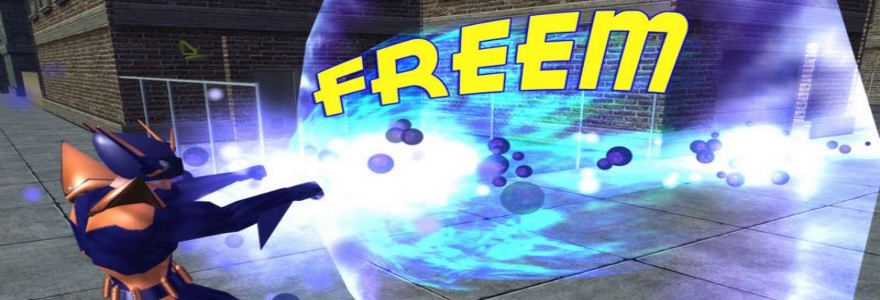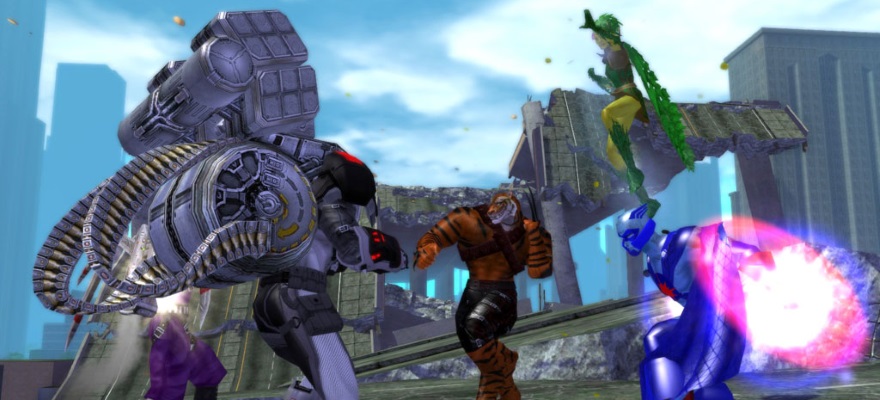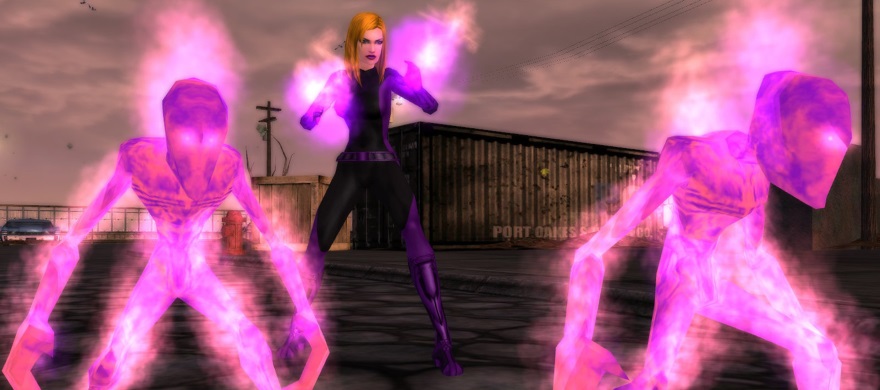
As we move into the fourth of five installments in the history, development, and downfall of City of Heroes, you may be wondering why I’m spending so much time in this space covering this superhero MMO. Part of it is pure indulgence, I’ll admit. Going this in-depth into this game’s lifespan is fascinating for me, and I wanted to take the time to do it right.
But I also feel that City of Heroes was a genuinely important game in this genre that deserves an elaborate post-mortem like this. It cultivated a loyalty and passionate following that we haven’t seen in many other MMOs. It had a tremendous amount of good ideas and gave the genre a genuinely different type of game that could have endured for decades. And it was totally rad.
So today we’re going to move into the golden era of City of Heroes, where the game grew into its fullness, came under the direction of a specialized studio, and successfully transitioned into a free-to-play model.

Paragon Studios and the Freem Fifteen
In the first few years of City of Heroes’ operation, Cryptic and NCsoft each owned half of the game’s intellectual property. This changed in late 2007, as NCsoft bought Cryptic’s half and formed a new studio that would handle the CoX franchise. This would be known as NorCal Studios (for “Northern California”) and was located in Mountain View, CA.
By the time that Cryptic handed over the reins of City of Heroes to NorCal, the developer team that existed was quite diminished following mass layoffs in 2006 that cut down Cryptic Studios by 75%. In fact, there were only 15 people left to work on the MMO, and to a person, they left to join the new studio and continue their efforts. This group of developers was known as the “Freem Fifteen” and was led by Matt “Positron” Miller. Other members of the Freem Fifteen included Christopher “Back Alley Brawler” Bruce, and Melissa “War Witch” Constance.
The title for the group came from an April Fool’s Day joke in which City of Heroes announced that it was going to include comic book-like word sounds during combat. The mock-up included the nonsense word “FREEM” and the label stuck to the team.
Cut loose from Cryptic and given more FREEMdom (sorry) to lead the game in new and exciting directions, the small studio started to grow once more. Over the next few years, the dev team would expand to include 80 employees.
But NorCal Studios wasn’t a great name, and apparently NCsoft agreed. The publisher announced in April 2009 that it was changing the name from NorCal to Paragon Studios as a way to deepen the connection between the studio and the Paragon City-located MMO that it operated.

Free-to-play arrives
While City of Heroes generally did well for itself under the Paragon Studios banner, publisher NCsoft was always looking for more and better ways to make money from the game. In 2008, NCsoft experimented with inserting real-world ads on City of Heroes’ in-game bulletin boards. This was supposed to be an optional setting, although NCsoft tried to guilt players into keeping them turned on by saying that the ad revenue went to fund the game itself.
To mark the transition, Paragon Studios renamed the game City of Heroes: Freedom. Players now had the option to subscribe or not, with both groups able to purchase items from the cash shop. At that time, a new tutorial was introduced into the game and a subscription-only premium server went online.
The new business model was a massive success. City of Heroes quickly became known as “one of the most generous free-to-play games ever,” with free accounts enjoying a large degree of unpaid fun (they couldn’t make missions or join supergroups).
Financially, free-to-play was a boon to Paragon. City of Heroes wasn’t tanking before the transition, but afterward it saw its revenue climb to around an alleged $12 million annually.

Mission architect and other inventions
While there were many significant releases for City of Heroes during its run, one of the greatest of these happened with Issue 14’s mission architect.
Years before Issue 14 became a reality, the dev team had been discussing player-created content in City of Heroes. “We’ve always talked about ways to get player material into the game,” said Jack Emmert back in 2007. “Maybe some day we can figure a way to put this stuff into the game. The imagination just on these forums alone is so amazing; I can only hope we find a way an outlet for it.”
The Architect update, as it became known, introduced such a player-created content system in April 2009. With this new system, players could design their own missions and story arcs and then publish them on the servers, where others could experience and enjoy them. The patch also added 118 badges that tied into this system and encouraged players to partake in them.
Through this system, each player could make and publish a maximum of three story arcs on their accounts. An arc could contain up to five chapters and could access the game’s entire library of maps and characters. Custom enemies could be created and player-made dialogue was included.
From the get-go, there were ways to elevate the better player missions above others, thanks to arcs that were hand-picked by developers and slated for permanent inclusion into the game. Missions that were rated highly by others also had an opportunity to stand out by joining the Hall of Fame.
Mission Architect was a huge hit among the playerbase. By week two of its release, over 25,000 custom-created missions had populated the servers.
While this was a flexible and engaging system that offered full loot and rewards, it also introduced exploitable missions that were designed to do nothing more than being semi-broken XP farms. The struggle to keep such missions under control while still allowing maximum player freedom and rewards kept Paragon Studios busy right up until the end.
Another cool feature that came to the game was Issue 9’s invention system. Up to that point, City of Heroes didn’t have a lot in the way of loot and gear, and so inventions were a way to flesh out the loot table and give players something new to collect and craft. Through the invention system, players could use salvage to craft enhancements, costume pieces, and temporary powers, provided that they had the recipes to guide them.
Here’s the whole saga to date!
 The Game Archaeologist: Digging up the history of City of Heroes
The Game Archaeologist: Digging up the history of City of Heroes
 The Game Archaeologist: City of Heroes’ launch history and the Marvel lawsuit
The Game Archaeologist: City of Heroes’ launch history and the Marvel lawsuit
 The Game Archaeologist: City of Villains, enhancement diversification, and Going Rogue
The Game Archaeologist: City of Villains, enhancement diversification, and Going Rogue
 The Game Archaeologist: City of Heroes moves into the Paragon Studios era
The Game Archaeologist: City of Heroes moves into the Paragon Studios era
 The Game Archaeologist: The Death of City of Heroes
The Game Archaeologist: The Death of City of Heroes
 Believe it or not, MMOs did exist prior to World of Warcraft! Every two weeks, The Game Archaeologist looks back at classic online games and their history to learn a thing or two about where the industry came from… and where it might be heading.
Believe it or not, MMOs did exist prior to World of Warcraft! Every two weeks, The Game Archaeologist looks back at classic online games and their history to learn a thing or two about where the industry came from… and where it might be heading.













